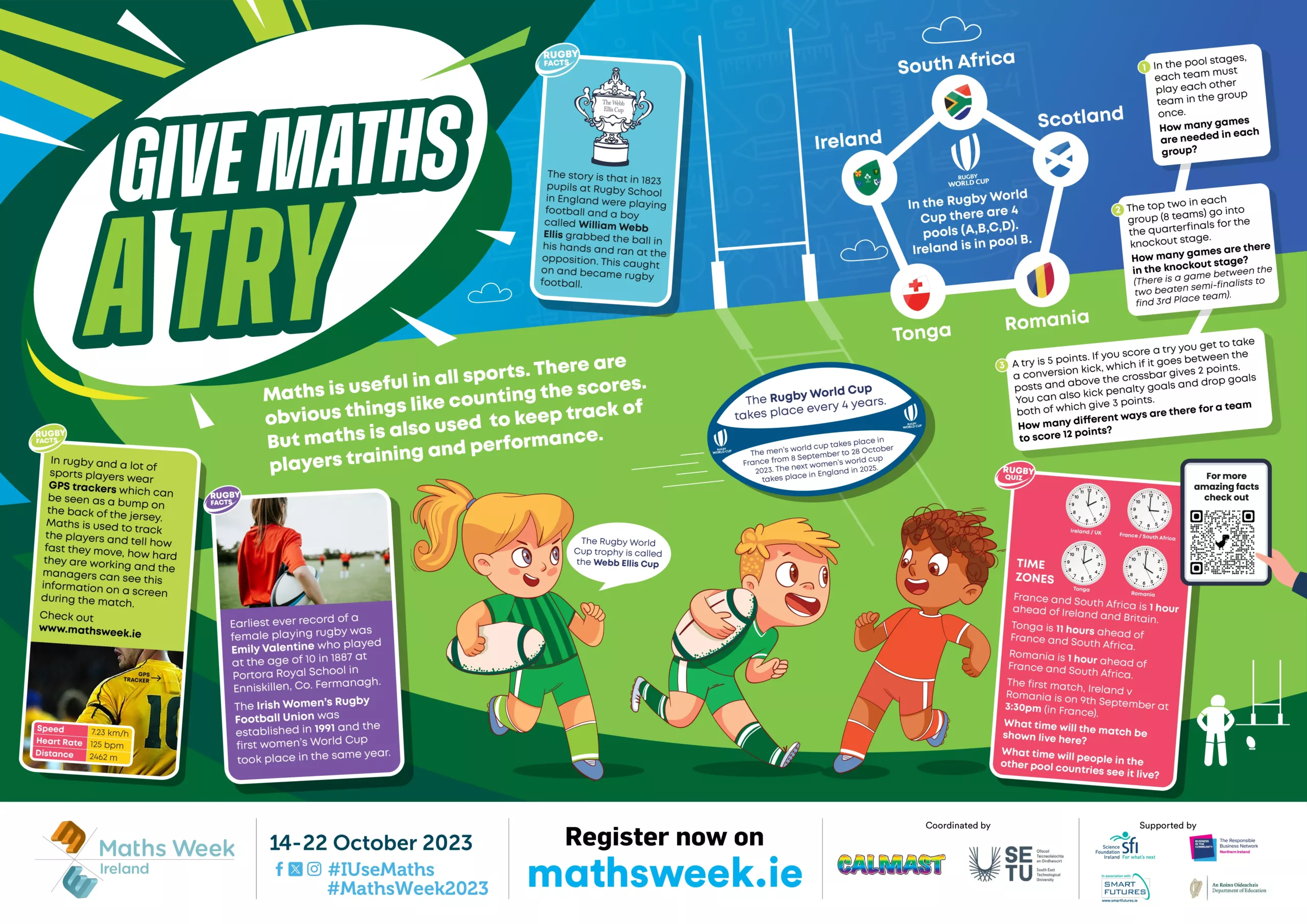This year’s Senior Primary poster has a rugby theme, coinciding with the Rugby World Cup.
You can see additional information and activities for this year’s poster below.
Rugby Facts
Ancient Rugby
The poster tells us that rugby was invented at Rugby School in 1823. According to some historians a game similar to rugby was initially played over 2,000 years ago by the Romans. The game was known by the Latin name Harpastum, derived from the Greek term for seize, which seems rather apt given the aim of the game.
Rugby Ball
Rugby ball’s distinctive plum shape makes them aerodynamic, easy to hold, and easy to pass over distances. To encapsulate those qualities, original rugby balls were made from inflated pigs bladders, stitched tightly to trap the air. Gross but very true!
Number 1 in the world
Going into the 2023 Rugby World Cup, Ireland was ranked no.1 in the world rugby rankings with 91.82 points. Closely behind in second place is South Africa with 91.08 points. The 2023 rugby world cup will further change the world rugby rankings.
Rugby World Cup
The Rugby World Cup is held every four years, and its location usually alternates between the northern and southern hemispheres. Ireland has taken part at every Rugby World Cup since the tournament was first held in Australia and New Zealand in 1987. However, Ireland have not yet advanced to the semi-final round. In a World Cup game, Ireland has never faced South Africa or England.
Fun fact: The same whistle is blown at the start of each World Cup. Welsh referee Gil Evans used the same whistle to preside over Rugby games for 20 years, donating it to the New Zealand Rugby Museum in 1969. The tradition was revived for the 1987 Rugby World Cup, and the whistle has been used for every tournament since.
Rugby in Ireland
Dublin University, founded in 1854, was the first organised Rugby Football Club in Ireland. Students at the University had first learnt the game while at English Public Schools. The establishment of the Irish Rugby Football Union was in 1879. Since then, Ireland has maintained a unified approach to rugby as the origin of IRFU predates the historical partition of the island into Northern Ireland and the Republic of Ireland in 1921. Instead of splitting Irish rugby under north and south lines, a conscious choice was made to preserve a single international rugby team that incorporates players from both sides of the border. This unification serves as a testament to the inclusive spirit of Irish rugby, transcending regional divisions for the collective benefit of the sport.
Questions for the Maths Week rugby poster 2023
Question 1: In the pool stages, each team must play each other team in the group once. How many games are needed in each group?
Additional Question: If there were 6 teams in a pool, how many matches would be needed?
Question 2: The top two in each group (8 teams) go into the quarterfinals for the knockout stage. How many games are there in the knockout stage? (There is a game between the two beaten semi-finalists to find 3rd Place team)
Question 3: A try is 5 points. If you score a try you get to take a conversion kick, which if it goes between the posts and above the crossbar gives 2 points. You can also kick penalty goals and drop goals, both of which give 3 points. How many different ways are there for a team to score 12 points?
Advance Question: How many ways are there for a team to score 21 points?
Question 4: How many possible different orders could the group finish in (assuming there are no tied positions).
| Rugby World Cup: POOL B |
|---|
| Ireland |
| South Africa |
| Scotland |
| Tonga |
| Romania |
Question 5: A rather ponderous pundit is asked for a predication for the finishing order in Group 1 in the World Cup and gives the following:
Ireland will finish ahead of Tonga.
Romania will finish two places behind Scotland.
Tonga will finish two places behind South Africa.
Scotland will finish behind Ireland.
Ireland will finish three places ahead of Tonga.
It’s not a very direct answer but can you work out the pundit’s prediction?
Question 6: In a rugby match, Team A scores 3 tries and successfully converts 2 of them. How many points did Team A score in total?
Question 7: In a knockout stage match, Team B scores 2 tries and successfully converts one of them. How many points did they earn from those scoring events?
Question 8 :If a rugby team scores a total of 17 points in a match and wins by 5 points, how many tries and conversions did they score, assuming they didn't kick any penalty goals or drop goals?
Question 9 :If a rugby team wins a match by scoring 24 points and they score 4 tries, how many successful conversions did they have?
Brian O’Driscoll
Brian O’Driscoll is a former Irish professional Rugby Union player. During his 15-year career, he captained Leinster, Ireland and the British and Irish Lions. He is the 8th-highest try scorer in international rugby union history, and the highest scoring centre of all time. O’Driscoll holds the Six Nations record for most tries scored with 26.
Tries:A try is when you run into the end zone with the ball in your hands and touch the ball down. 5 points are given to the scoring team when a try is achieved.
Question : How many points in total has Brian O’Driscoll received in his Six Nations records with 26 tries? A try is 5 points.
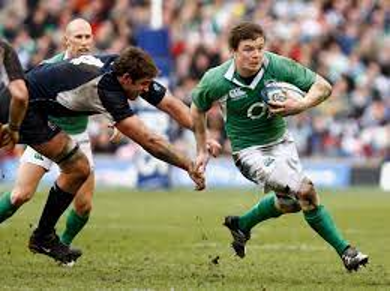
(Getty images)
Angles
Angles are super important in rugby. Players need to figure out the right angles for lots of things, like passing the ball to a friend or trying to kick it through the goalposts after scoring a try.
When a team scores a try, they can try to get extra points by kicking the ball over the crossbar and between the posts. People used to think that the best angle to kick the ball was 45 degrees, but that didn’t consider how the air slows the ball down.
Scientists investigated it and found that when you think about air slowing the ball down, the best angle to kick it is actually 30 degrees. So, players have to pay attention to the angles to do their best in the game!
Question: If a rugby player kicks the rugby ball at point Z using 30 degrees at angle C. Calculate angle A (the angle between “Y” the base of the goalpost and “Z” the starting position of the rugby ball.

Rugby Speed
Aaron Sexton is an Irish rugby union player who plays wing or fullback for Ulster in the United Rugby Championship. Aaron sexton is one of the fastest players in Irish Rugby. In school, he was a track sprinter who won All-Ireland championships in the 100m and 200m, representing Bangor Grammar School. Sexton holds a 10.43 second PB for the 100m and 20.69 for the 200m. Separately, he’s been clocked at 37.8 km per hour on a rugby field. 37.8km per hour is the same as around 23.49 miles per hour.
Question: Convert Sexton’s speed of 37.8km per hour to metres per second?
Additional Question: Convert Sexton’s speed of 23.49 miles per hour to miles per second?
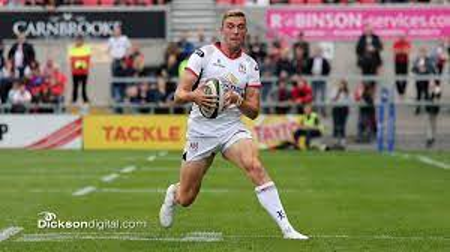
(Getty Images)
Rory Best
Rory David Best OBE is an Irish former rugby union player who was the captain of the Ireland national team from 2016 to 2019. He also played hooker for Ulster Rugby. Rory is one of the most capped rugby players of all time with 124 caps for Ireland. In rugby, a cap is a player’s appearance in a game at international level e.g., Rory best has represented Ireland in rugby matches 124 times in his career. On the 26th of November 2016, he became just the fifth man to reach 100 Ireland caps as they had beaten Australia 27-24. Rory Best is said to weigh 105kg. The average weight of a human in Europe is said to be 70kg.
QUESTION:Calculate how much heavier Rory Best is with 105kg compared to the average human weight with 70kg?
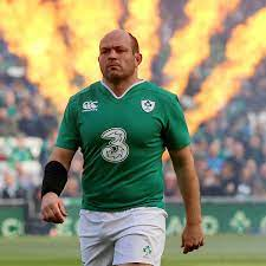
(Getty Images)
Ireland's Women Rugby Team
Ireland made their debut in the Women’s Six Nations Championship in 1996. Ireland won their first championship in 2013, winning both a Triple Crown and a Grand Slam at the same time. The Triple Crown is contested amongst the home nations where England, Wales, Scotland and Ireland compete. Italy and France are not included in the Triple Crown. A Grand Slam is when one team wins every match in a single Six Nations Championship.
On the 9th of February 2013, Ireland’s Women rugby team defeated England for the first time. Alison Miller scored a hat-trick of tries as Ireland won 25–0. A hat-trick is when a player scores three or more tries in a game.
Question: Calculate how many tries in total did Ireland score that day? Note: A try is 5 points each.
Additional Question: When Ireland won the Women’s Six Nations championship, they defeated France 15–10. Calculate the different way’s Ireland could have achieved the 15 points.
Solution to Question 1
Solution: There are 5 teams in a pool. For example, in pool B, there is: Ireland, South Africa, Scotland, Romania, Tonga.
Ireland must play the four other teams. Thus 4 matches.
South Africa must play the four other teams, however we have already counted their match with Ireland. Thus it is only 3 matches.
Scotland must play the four other teams, however we have already counted their match with Ireland and South africa. Thus it is only 2 matches.
Romania must play the four other teams, however we have already counted their match with Ireland, South Africa, and Scotland. Thus it is only 1 match with Tonga.
To find the total number of games in each pool, add up the number of matches together:
4+3+2+1= 10 matches are needed in each group.
Solution to Additional Question:
5+4+3+2+1=15 matches are needed in each pool.
Solution to Question 2
Solution A:
- Quarterfinals: There are 8 teams that advance to the quarterfinals, and each quarterfinal match involves two teams. So, there are 4 quarterfinal matches.
- Semifinals: The winners of the 4 quarterfinal matches advance to the semifinals. Each semifinal match involves two teams. So, there are 2 semifinal matches.
- Finals: The winners of the 2 semifinal matches face off in the finals. There is 1 final match.
- 3rd Place Match: There is a game between the two beaten semifinalists to determine the 3rd Place team. This is 1 additional match.
To find the total number of games in the knockout stage, add up the number of matches at each stage:
Quarterfinals (4 matches) + Semifinals (2 matches) + Finals (1 match) + 3rd Place Match (1 match) = 8 matches in the knockout stage
Solution B:Another way of thinking about this is that every match will have one loser. If there are 8 teams, there must be 7 losers, therefore 7 matches. Plus the extra match for 3rd place.
Solution C:
Draw a diagram to represent the knockout stages:
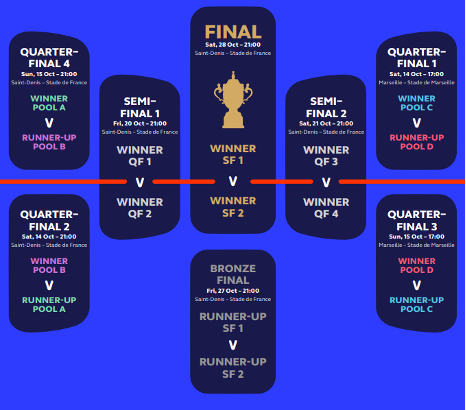 .
.
Solution to question 3
Solution
Abbreviations:
- T(try)=5 pts.
- C(conversion)=2 pts.
- P(penalty)=3 pts.
- D(drop goal)=3 pts.
T+T+C=12.
P+P+P+P=12.
P+P+D+D=12
D+D+D+D=12.(We could have different combinations with penalties and drop goals? Do I write them)
Solution to Advance Question
T+T+T+P+P= 5+5+5+3+3=21.
T+T+C+P+P+P= 5+5+2+3+3+3=21.
T+C+T+C+T+C= 5+2+5+2+5+2=21.
7 X P= 21
7 X D= 21
Solution to question 4
Solution
5x4x3x2x1 = 120 different possible orders
Solution to Question 5:
Solution:
| S.n. | Teams |
|---|---|
| 1. | Ireland |
| 2. | South Africa |
| 3. | Scotland |
| 4. | Tonga |
| 5. | Romania |
Solution to Question 6
Solution: 5(3)+2(2)=15+4=19.
Solution to Question 7
Solution: 5(2)+2= 12 points.
Solution to Question 8
Solution: 5+5+5+2: 3 tries and 1 conversion.
Solution to Question 9
Solution:
4 tries is 20 points in total.
24-20 is 4 points leftover.
A conversion is 2 points.
4 divide by 2= 2 conversions.
Solution to Question 10
Solution: 26 x 5 points= 130 points.
Solution to Question 11
Solution:
180 degrees= all angles in the triangle.
180-90(the right angle)-30(the starting position) =30 degrees.
Angle A=30 degrees.
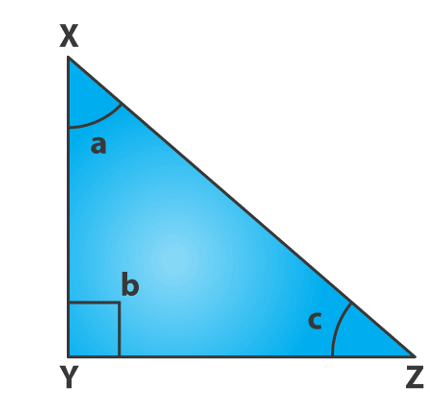
Solution to Question 12
Solution:
37.8km per hour = 37,800 metres per hour.
37,800 metres per hour: divide by 60 = 630 metres per minute.
630 metres per minute: divide by 60 = 10.5 metres per second.
Solution for additional question: 23.49 miles per hour: divide by 60= 0.3915 miles per minute.
0.3915 miles per minute: divide by 60= 0.006525 miles per second.
Solution to Question 13
Solution:
Weight of Rory Best – Average Human Weight = 105 kg – 70 kg = 35 kg
Solution to Question 14
Solution:
25 divide by 5= 5 tries.
Solution for additional question:
3 Tries: 5+5+5=15.
5 drop goals: 3+3+3+3+3=15
5 penalty goals: 3+3+3+3+3=15
Two tries with one conversion, and a penalty goal: 5+2+5+3=15

